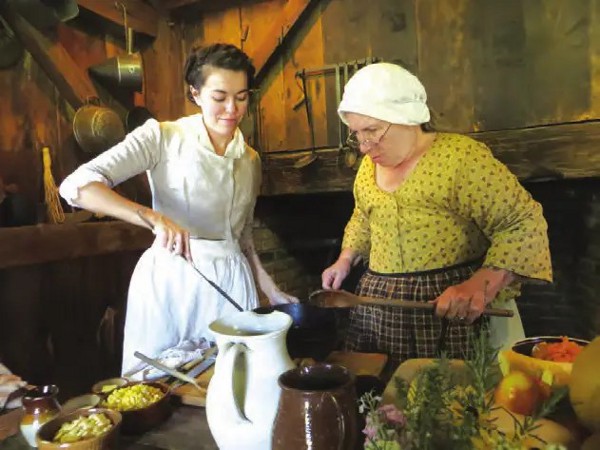
.
All content included on this site such as text, graphics and images is protected by U.S and international copyright law.
The compilation of all content on this site is the exclusive property of the site copyright holder.
Open Hearth Cooking
at the Miller-Cory House Museum
Sunday, 23 March 2025
Early in March my friend Bill made mention of an Open Hearth cooking demonstration at the Miller-Cory House.

Was I interested? Peering closely at the image accompanying the notice I thought to myself, "Aha! The woman on the right looks like Arlene." She has presented excellent open hearth programs at other venues which I have previously enjoyed. Bill and I made plans to meet up. Looking forward to a pleasant afternoon.
The Miller-Cory House Museum is located at 614 Mountain Avenue in Westfield, New Jersey.
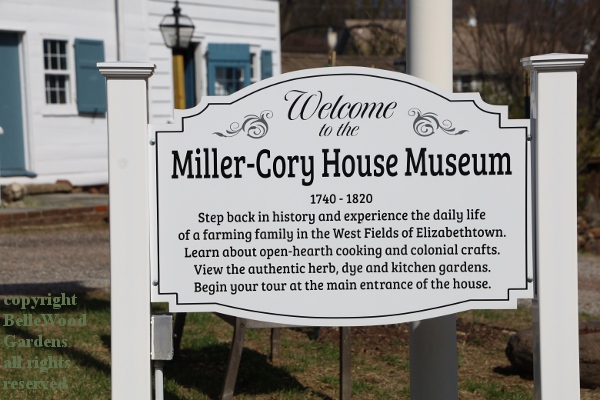
After being built in 1740, it had been owned by the Miller and Cory families for 180 years, until 1921.
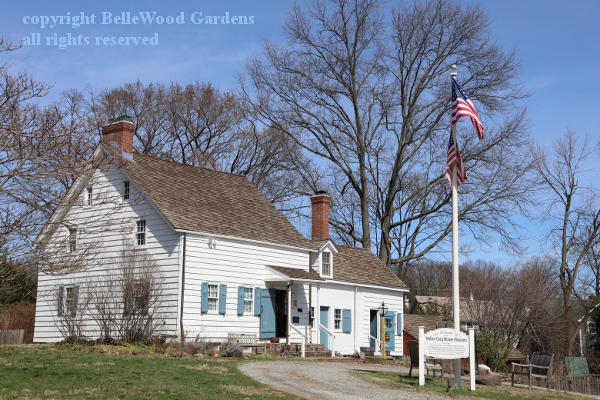
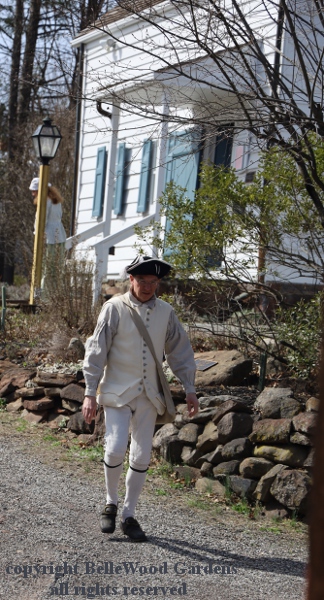
A warp in time. This colonial man is walking towards the back of the property. Let's follow.
He appears to be going to the cookhouse, known today as the Frazee Building.
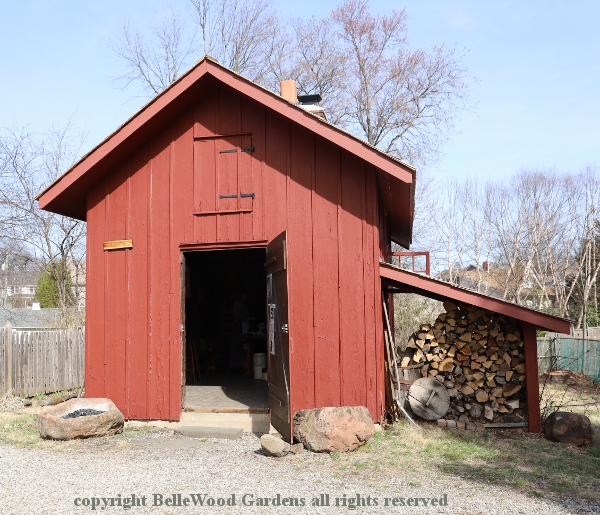
This is where the Sunday cooking demonstrations are presented. Arlene mentioned to me that
the building had been willed to the museum by the Frazees. Eagle scouts had carefully labelled
each beam and board, disassembled the building, bringing the pieces to the Miller-Cory House
where it was reassembled. The open hearth fireplace and bake oven were also built by the scouts.
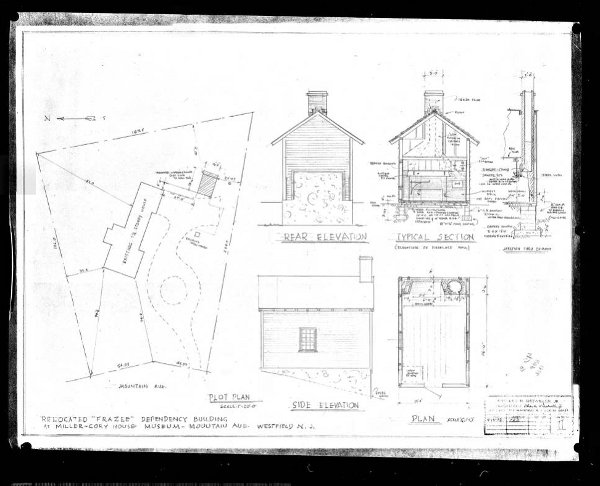
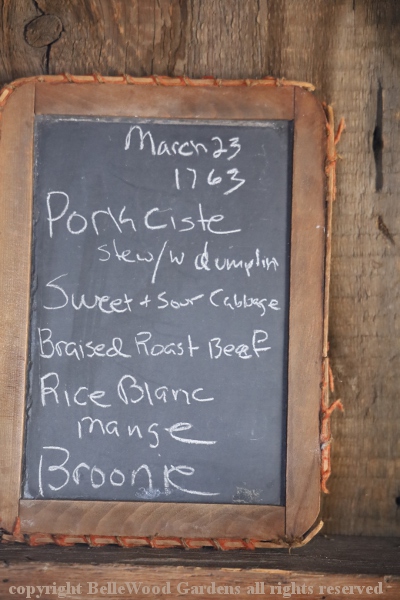
Here is the menu. Let's see . . . what will Arlene and young assistant be making today.

Pork and apple ciste. Pronounced with a hard "c" this refers to a casserole often with
a pork and apple filling, covered with a pastry crust. (Arlene added raisins this time.)
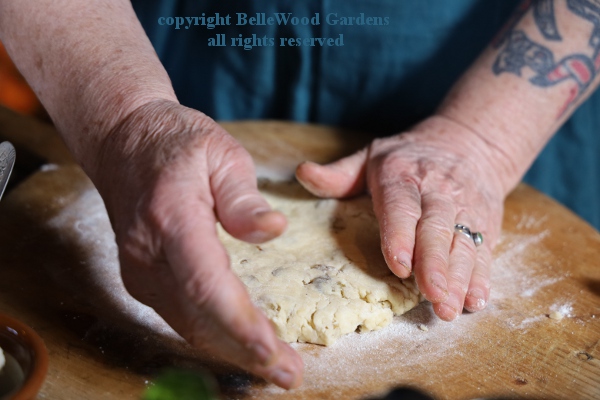
Welsh or Irish, it is the Gaelic for chest (or, Arlene said, coffin.) It seals the casserole
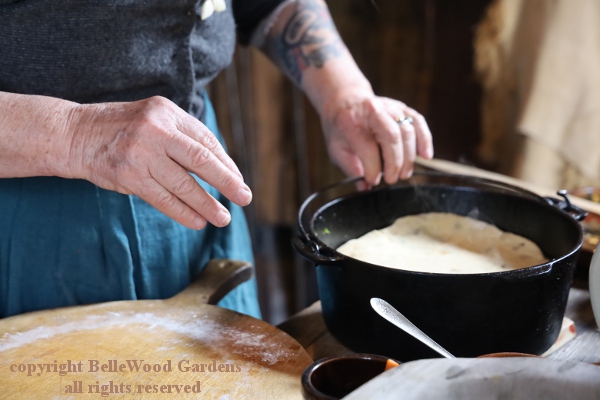
and the flavorful meat and vegetables and apples simmer away, sealed under the tight crust.
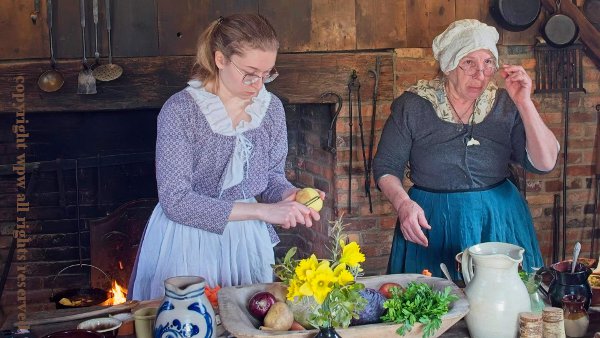
image copyright Bill Woodall all rights reserved
Arlene and her helper Margaret are busy preparing a variety of vegetables for today's dishes.
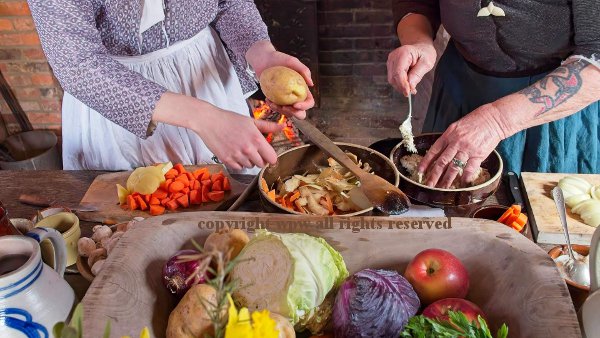
image copyright Bill Woodall all rights reserved
March was a time when the last of winter stored produce (kept in a root cellar) would be used.
At winter's end they would likely have appeared "tired" and cabbage would have been pickled.
Seasonings could be herbs, fresh or dried, that had been grown on the farm.
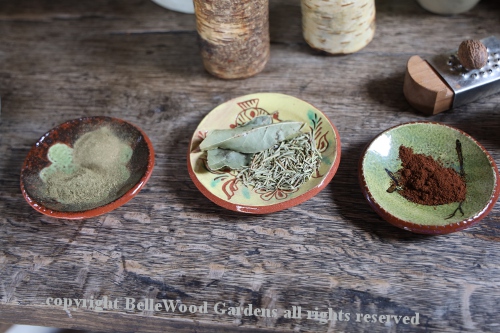 .
.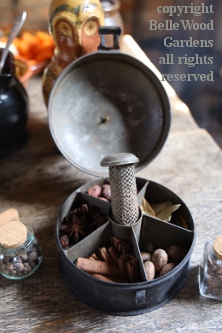
Rosemary, thyme, basil, chives, mint, sage, marjoram, savory, oregano, lavender, chamomile, and hyssop
were all grown in colonial times. Imported spices: pepper, cinnamon, ginger, nutmeg, mace, and cloves.
I was especially taken with this five compartment spice box, its center column a convenient nutmeg grater.
The Frazee cookhouse has all sorts of necessary kitchen tools, of course all powered by hand.
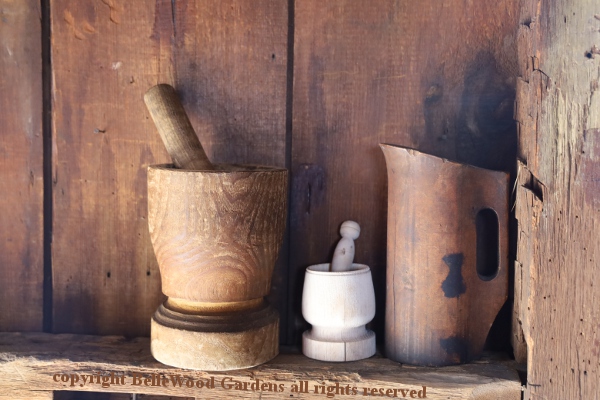
A sturdy cross board supports a wooden mortar and pestle, a smaller china one, a wooden pitcher.
The museum itself, furnished as if the family was still in residence, displays
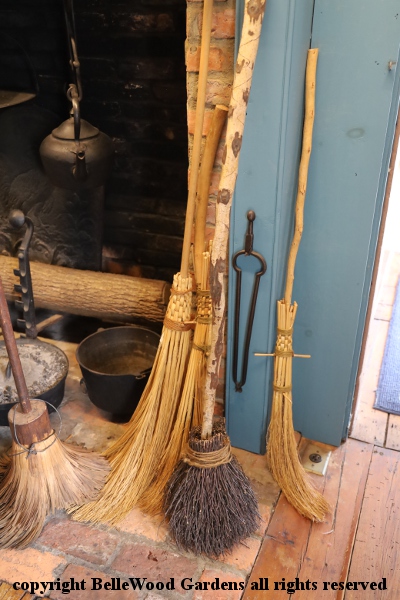
everything from an assortment of besoms, twiggy brooms made as needed.
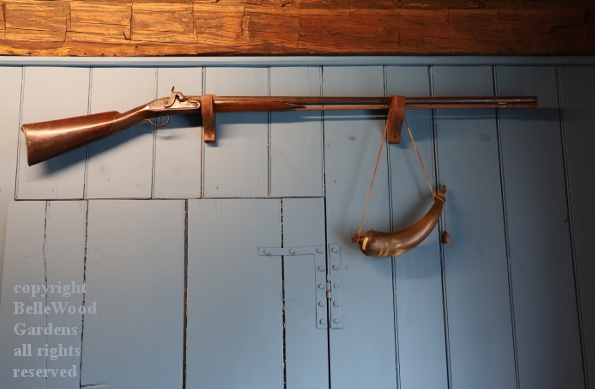
A flintlock rifle and its powder horn, to hunt for game when time permitted.
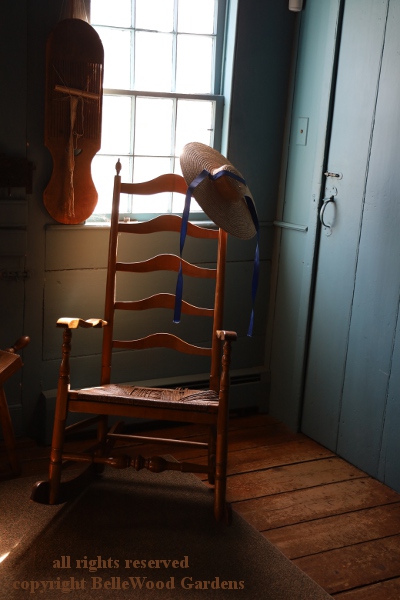
And when time allowed, a rocking chair in which to sit, perhaps knit.
These are inanimate statues. But on April 27 there will be live sheep, part of a Sheep to Shawl Festival.
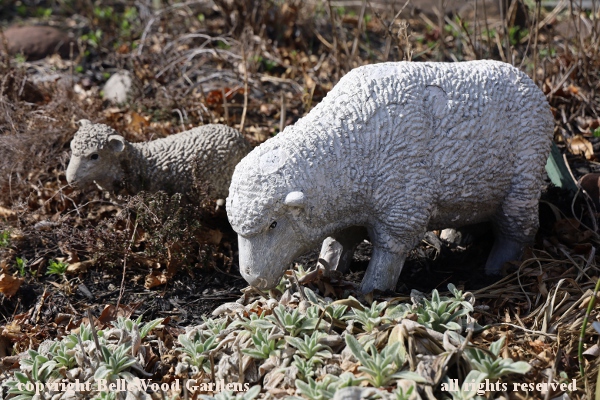
Sheep will be sheared, using hand shears as was done in early America. Museum docents
will demonstrate related period crafts including carding, spinning, weaving and knitting.
Be still, my heart. Back to modern times. This was only a visit
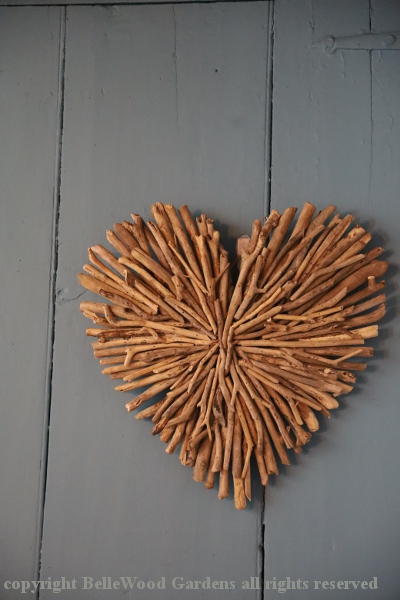
to one of the first "plantations" in the West Fields of Elizabethtown in New Jersey.
If you have any comments or questions, you can e-mail me: jgglatt@gmail.com
Made a visit? Please share what you think of the Mexican Modern Orchid Show at NYBG.
Back to March
Back to the main Diary Page